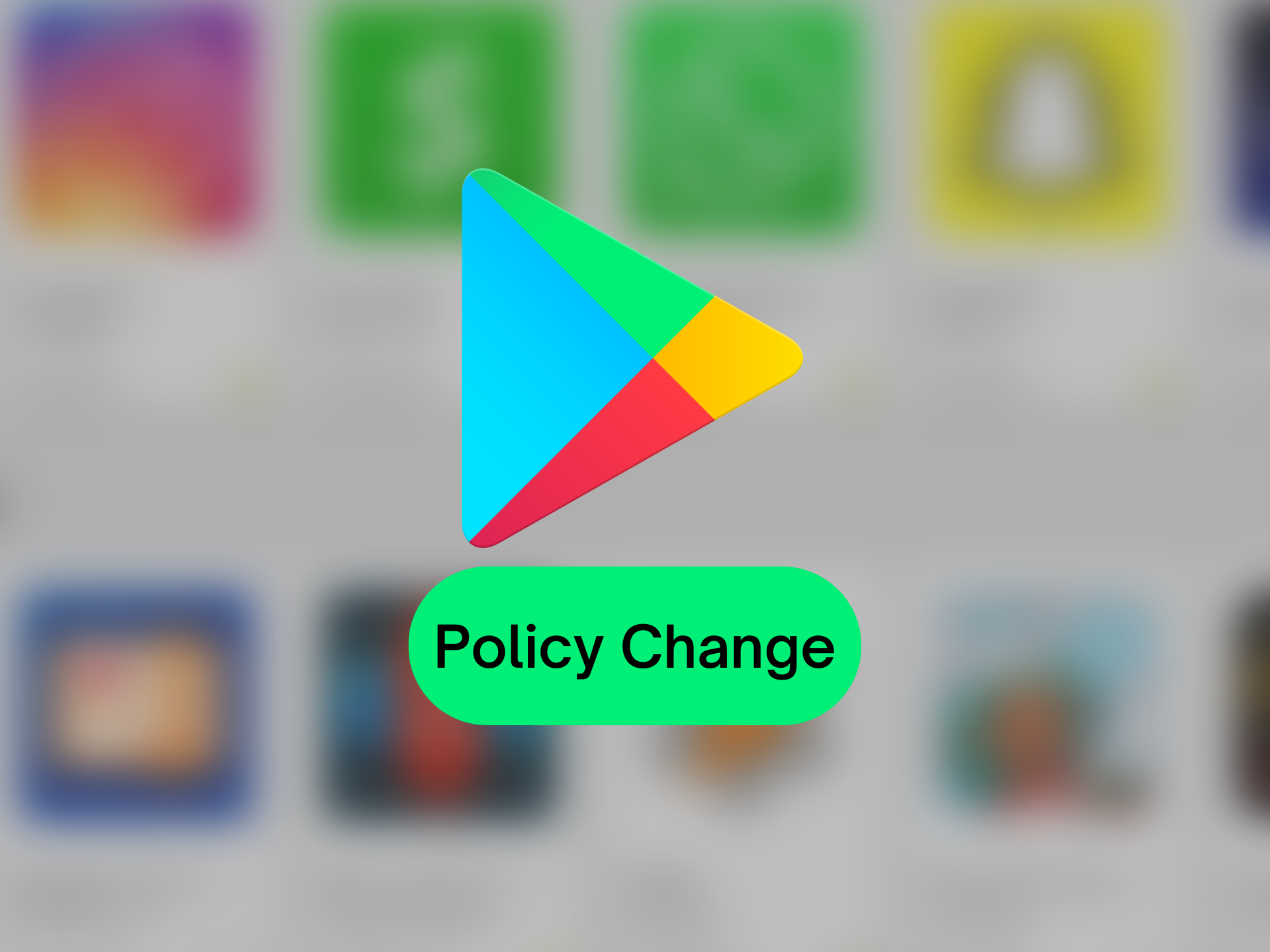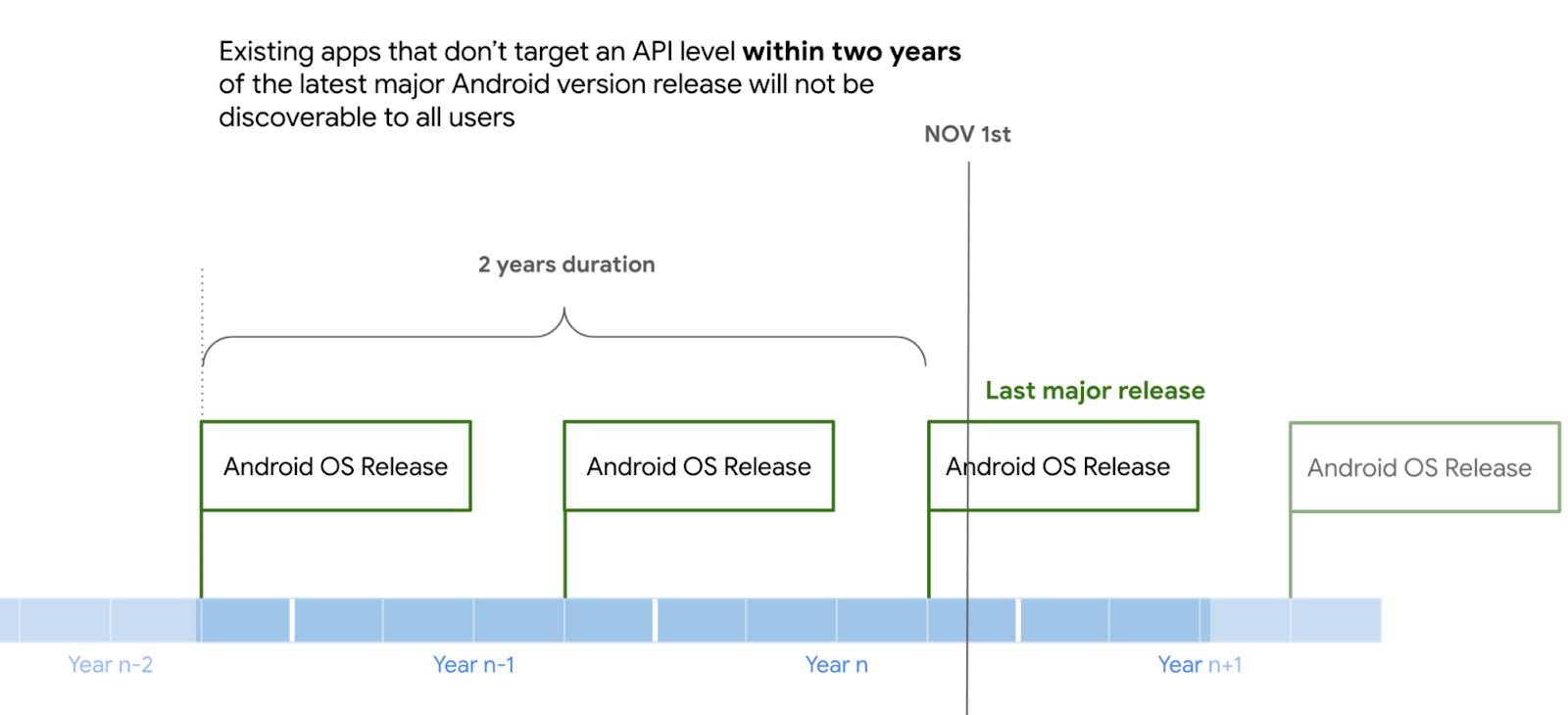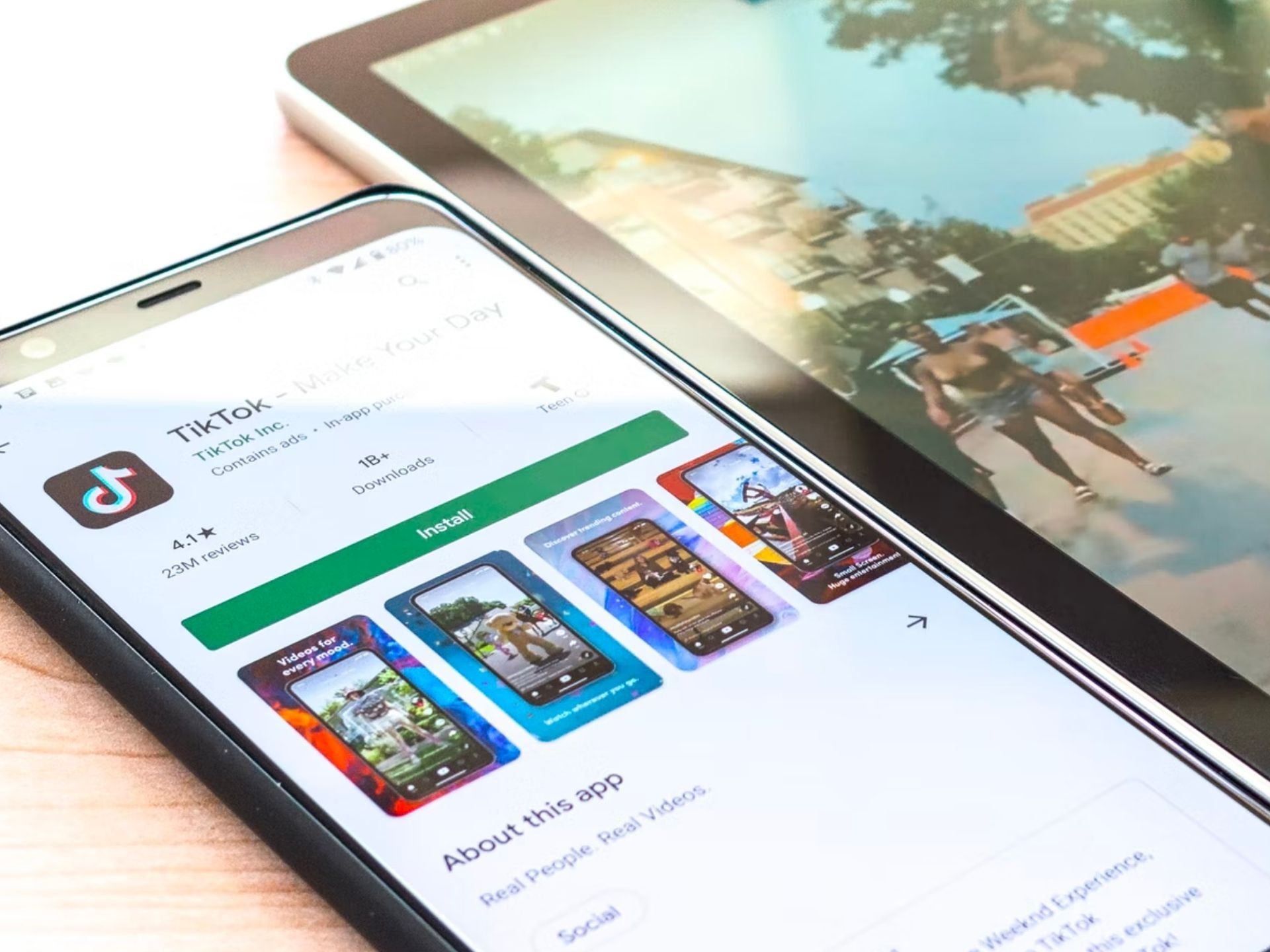Google has been pushing developers toward maintaining their apps for years. It even introduced many new policies and features to encourage them and make the process more streamlined and easier to manage. As a result of the policy change, Android, as a platform, has become more restricted over the years, and while some developers may dislike the newly introduced changes, its an either “you change it or leave it situation”. In the latest Google Play Store policy update, Google announced that developers who don’t target a current API level within two years of the latest major Android release would be unable to have their apps show up on the store and installed by new users.
The official blog post also provides a timeline:
“Starting on November 1, 2022, existing apps that don’t target an API level within two years of the latest major Android release version will not be available for discovery or installation for new users with devices running Android OS versions higher than apps’ target API level. As new Android OS versions launch in the future, the requirement window will adjust accordingly.”
Source: Google
Google then explains why this is necessary, and the statement claims that it wants to make applications and users’ data more secure with more up-to-date privacy policies. “Expanding our target level API requirements will protect users from installing older apps that may not have these protections in place.”
The good thing is that Google will not straight up block access to previously installed applications, and users who used or relied on older applications that haven’t been upgraded for a long time will still be discoverable and installable, but users who haven’t previously installed it will be unable to find and download or install said apps.
“This strengthened Target Level API policy is just one of the policy updates we announced today to expand user protections and improve user experiences on Google Play. We’ll continue to share updates about this important work that will help raise the bar for app privacy and security across the board, making Google Play and Android a safer place for everyone.”
The new Google Play Store policy change is everything but unexpected, and there is no reason for users to install or find applications that haven’t been updated for many years. The fact is that having such an extensive catalog of applications is a huge security risk. Although Google has excellent measures in place to protect users from hacks, adware, and malware, the system isn’t perfect. We’ve seen several cases in the past where certain groups were able to bypass the system and steal information or spam notifications and advertisements. We also heard of cases where hackers mined cryptocurrency on affected devices, earning them a large sum of money while going unnoticed for several months.
Source: Unsplash: obionyeador
Many applications out there already do not support older versions of Android as it requires more work for developers to support certain features, and bringing it over could be time-consuming and very costly. The new API target is currently set at Android 11 (API level 30), which will be increased to Android 12 (API level 31) in August 2022. Old and abandoned apps will be left alone until they’re updated to comply with the newly introduced Play Store policies.
The developer side of me wants to hate the new changes, but I find it essential to provide timely updates, develop applications that are safe and secure to use, and also use the latest technologies to take advantage of new APIs. Older versions of Android may not support the latest new features, such as dark mode, or the dynamic theming engine that was introduced recently. Updating can provide new features that would enhance and improve the user’s experience, which is also a massive benefit in my books. It’s also important to keep in mind that updates aren’t necessarily bad, and they’re there to keep us all safe.
The downside of using new APIs is that they usually introduce more restrictions and permissions, giving developers a headache as they have to maintain and update their applications more frequently. Some old legacy features may break, which requires a complete overhaul and implementation using new methods, which is time-consuming and could cost a lot of money.
Due to the nature of Android, old applications will remain accessible from third-party app stores and places such as ApkMirror. The problem is that most other third-party services don’t scan content as thoroughly as Google, and it could potentially contain harmful content such as malware or adware. There are other options to save old applications, involving backing up apps and storing them locally either on the device, in Google Drive, or on a computer.



